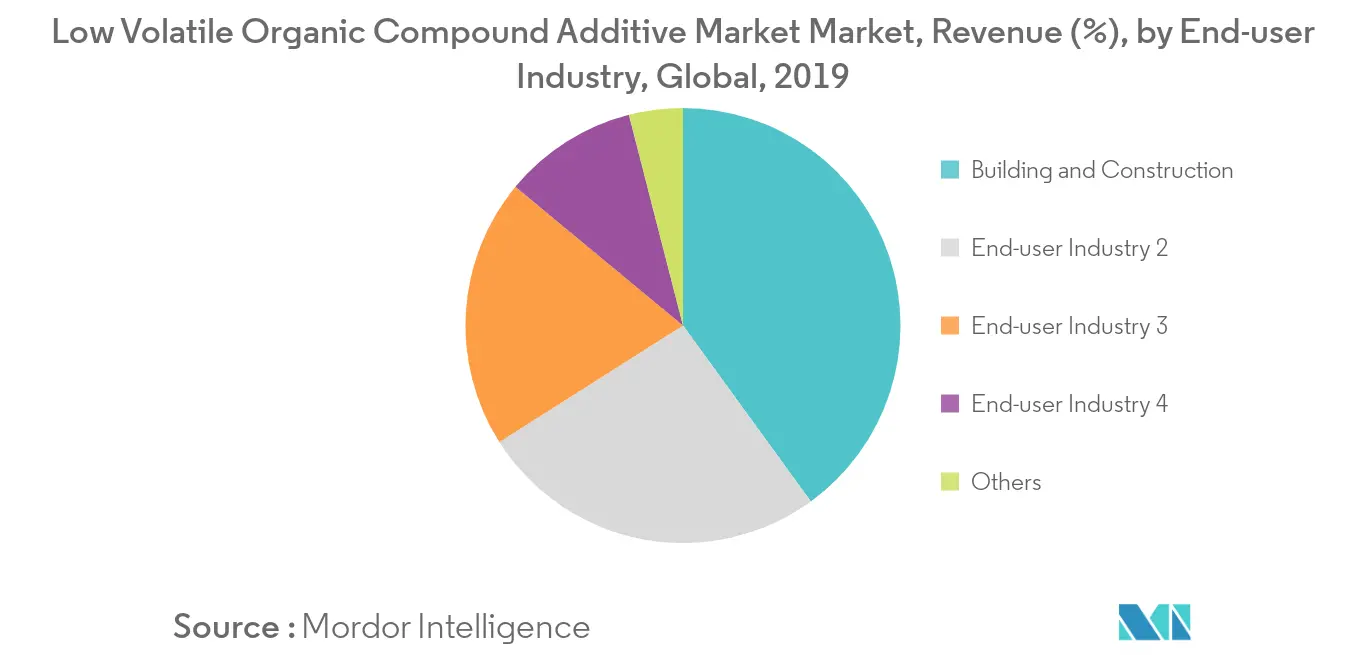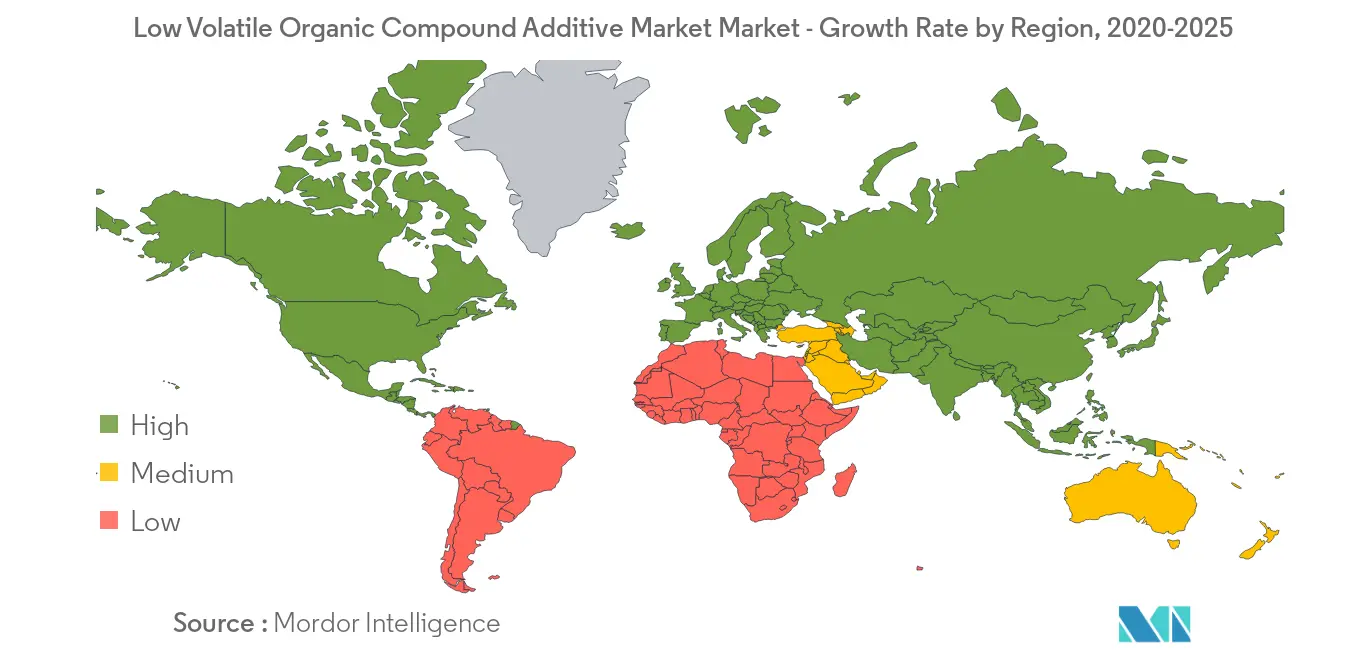Market Trends of Low Volatile Organic Compounds Coating Additives Industry
This section covers the major market trends shaping the Low Volatile Organic Compounds Coating Additives Market according to our research experts:
Building and Construction Industry to Dominate the Market
- Building and Construction industry stands to be the dominating segment owing to the continuous need for better and more advanced infrastructures.
- The building and construction segment includes low volatile organic compounds coating additives used in paints and coatings for commercial purposes, such as office buildings, warehouses, retail convenience stores, shopping malls, and residential buildings.
- The low volatile organic compounds coating additives are added to change their physical properties and employ properties such as stable color, high gloss, low environmental impact, and excellent surface appearance.
- The architectural coatings market is expected to register a CAGR of over 6%, during the forecast period. The increasing demand for decorative architectural coatings in houses, for greater aesthetics, is estimated to boost the demand for low volatile organic compounds coating additives in paints and coatings at a significant rate in the next few years.
- Volatile organic compounds evaporate, subsequently transfers harmful chemicals into the air that can be dangerous. Poor air quality can have a detrimental effect on the public's health, as well as the environment. Therefore, growing health concern and Stringent environmental regulations from agencies such as Environmental Protection Agency (EPA) and Registration, Evaluation, Authorization and Restriction of Chemicals (REACH) are expected to drive the market growth.
- Throughout the forecast timeframe, all the above conditions are anticipated to boost the demand for low volatile organic compounds coating additives.

Asia-Pacific Region to Dominate the Market
- Asia-Pacific has seen substantial growth in the demand for low volatile organic compounds coating additives in the recent past, especially from countries such as China, South Korea, and India owing to increasing infrastructural projects in the region.
- The Asia-Pacific paints and coatings market is estimated to witness significant growth, at an estimated CAGR of over 5%, over the forecast period. China is expected to witness the highest growth in construction activities, followed by India.
- In the Asia-Pacific region, the building and construction sector is experiencing good growth which is expected to provide a boost to the demand for paints and coating over the forecast period.
- For instance, China's 13th Five Year Plan started in 2016 as it was an important year for the country's engineering, procurement, and construction (EPC) industry. In addition to this, the country ventured into new business models domestically and internationally, during the year.
- Furthermore in India, the infrastructure sector has been one of the main areas of policy focus. The Government wants to improve the development of buildings in the country and has agreed to set up a single-window clearance system in order to provide swift approval of the construction projects.
- The growth in commercial and residential sectors is expected to boost the paints and coatings market in the country. Thus, driving the demand for low volatile organic compounds coating additives during the forecast period.

